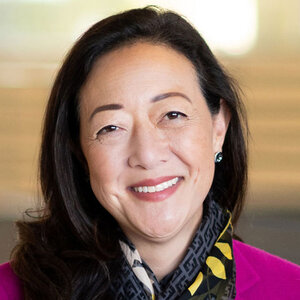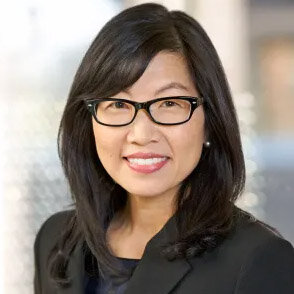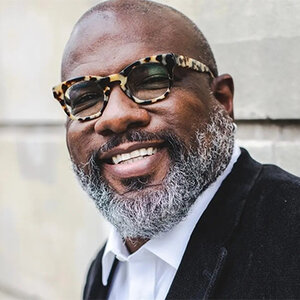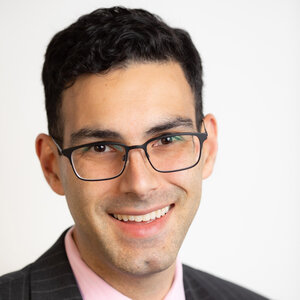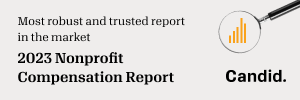Christine Kuan, President and Executive Director, Creative Capital: Supporting artistic and cultural discourse
July 11, 2023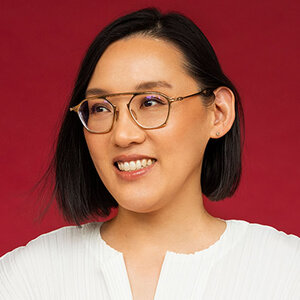
Christine Kuan has served since 2021 as president and executive director of Creative Capital, a public charity providing individual grants to artists to support the creation of new work, sustainable careers, and freedom of expression. The organization was founded in 1999 after the National Endowment for the Arts (NEA) discontinued most of its individual artists grants. To date, Creative Capital has awarded grants and services to 901 artists and supported more than 80,000 artists through its educational programs.
Before joining Creative Capital, Kuan was CEO/director of Sotheby’s Institute of Art-New York. She has more than 20 years of experience in both the nonprofit and commercial arts sectors, including Artsy, the Metropolitan Museum of Art, and Oxford University Press. She holds an MFA in poetry from the Iowa Writers’ Workshop and a BA in art history and English from Rutgers University.
PND asked Kuan about maintaining funder relationships and building new ones following the Andy Warhol Foundation for the Visual Arts’ recent five-year commitment to the organization, as well as how the organization supports free expression within a polarized political climate.
Philanthropy News Digest: The Andy Warhol Foundation for the Visual Arts recently committed $7.5 million to Creative Capital over the next five years. Can you explain the impact of this gift? What kinds of projects, initiatives, or endeavors could this allow Creative Capital to pursue?
Christine Kuan: This tremendous long-term gift gives us stability in uncertain times, enabling us to plan ahead with programming, staffing, and artist outreach. It also signals to other funders that our founding donor has confidence in the leadership of the organization and the direction that we’re moving in.
In terms of its impact on artists, we can continue to expand our grants and services for artists. When I joined, I increased our grantmaking from 35 to 50 awards a year—that was a big leap, a 40 percent increase in direct funding to artists. We also recently launched a brand new curriculum for artists which is freely accessible online, and that’s a radical shift because historically we had always charged artists for workshops and online sessions. We found during the pandemic that a lot of underserved artists were not able to afford $35 a session; it’s just prohibitive. We thought, why not experiment with a new model where institutional members and supporters help fund these resources so that we can make the curriculum free for artists everywhere. In the first three months, we’ve already had over 7,000 artists register from 63 countries, and we’re in conversation with many of the top art schools about institutional memberships. We believe that making professional development education freely accessible to individual artists helps to develop a more equitable arts ecosystem.
PND: Funder relationships like Creative Capital’s with the Warhol Foundation, which helped establish the organization, are rooted in a history of collaboration and trust. How does Creative Capital attract and retain new funders?
CK: In such a challenging fundraising landscape, I hope our track record of serving artists speaks for itself, as we’ve awarded $55 million in grants and services to 901 artists and provided resources and programs to 80,000 artists across the country. It still takes long-term relationship building—for people to get to know me, our team, our artists, and our new initiatives. We are always seeking new patrons who are really excited about the grassroots work that we are doing.
We work with artists in an intimate, long-term way that goes beyond a check. For example, if an artist is making a pivot from visual art to opera, Creative Capital will not only help fund the project, but we will also provide financial planning, tax planning, communication strategy, and help find experts to help that artist produce the opera. This is quite unique and enables us to walk alongside artists over many years to help their project and their practice develop over time.
[I]t’s critical to also recognize the necessity of funding artists directly so that their works can then be collected, screened, exhibited, and performed. Funding artists is critical to being able to foster equity and diversity in the arts ecosystem.
We have long-standing relationships with many major institutional funders, such as Bloomberg Philanthropies, Doris Duke Foundation, and the Warhol Foundation. But there are also new individual funders and some young patrons who are excited to discover that they can directly support artists, especially artists of color, women, LGBTQIA+, and artists with disabilities by making a tax-deductible donation to Creative Capital. While it’s great that so many conversations are focused on diverse representation within museum collections, in Hollywood, and other areas of the arts, it’s critical to also recognize the necessity of funding artists directly so that their works can then be collected, screened, exhibited, and performed. Funding artists is critical to being able to foster equity and diversity in the arts ecosystem.
PND: Creative Capital was founded, as you said in an interview, “in resistance to censorship” in 1999 when the NEA discontinued its grants to individual artists, and has since maintained a keen focus on uplifting artists’ freedom of expression. How does the organization navigate the polarized political climate, especially as the ideas of free speech and free expression have been used by some to defend hate speech?
CK: I think in this difficult political and social climate, artists can be key to opening up dialogues about our most pressing issues. However, we are not here to advance any political agenda; we’re here to support artists creating risk-taking, adventurous new work. The best way for us to support freedom of expression is actually in our grantmaking process. We’re a national, open-call, multidisciplinary funder, and all applications are externally reviewed by experts. We’re not evaluating political ideas; we’re looking for innovative, interesting project ideas that contribute to the discourse of arts and culture.
Because we’re here to help fund new projects, Creative Capital has been a leader in supporting underserved, marginalized, and risk-taking artists, and more than 75 percent of our grantees in recent years have been artists of color, women, LGBTQIA+, and artists with disabilities.
One project we are funding by Viva Ruiz is Thank God for Abortion, a Telenovela, and it’s about abortion as health care, directly inspired by how public health initiatives since the 1990s partnered with telenovela creators to write storylines that helped normalize conversations and care around HIV/AIDS. We’re also funding projects around climate change, such as Brian House’s Macrophones, where he records infrasounds that are too low-frequency to hear but are passing through the atmosphere from glaciers, wildfires, and energy infrastructures. Because we’re here to help fund new projects, Creative Capital has been a leader in supporting underserved, marginalized, and risk-taking artists, and more than 75 percent of our grantees in recent years have been artists of color, women, LGBTQIA+, and artists with disabilities. By focusing our grantmaking on what new adventurous work artists are dreaming of creating, we naturally fund voices who have not been recognized or supported before.
PND: While diversity in philanthropic leadership is increasing overall (the Council on Foundations’ 2022 Grantmaker Salary and Benefits Report found that people of color now make up 14 percent of foundation CEOs, up from 12 percent in 2021) there is still a scarcity of Asian Americana and Pacific Islander (AAPI) women leaders in arts organizations. How would you categorize the sector’s progress when it comes to arts leadership and what, if anything, must change to accelerate progress?
CK: My role and a lot of nonprofit and museum director roles are mainly fundraising roles. So appointing a leader of color is just the first step. It’s essential that the philanthropic community also steps up to support their fundraising efforts so that they can be successful in realizing their vision for the organization. One reason why we still lack diversity in top leadership roles at major museums and other fundraising institutions is because you have to have very strong connections to wealth to raise sufficient funds for operating major institutions. There are some philanthropists who really understand these systemic challenges and are making major gifts in support of leaders of color and that lifts up the entire ecosystem. I’m very grateful for all of the institutional and individual donors who have made it possible for me to augment our grantmaking and services—without them, none of our work would be possible.
[A]ppointing a leader of color is just the first step. It’s essential that the philanthropic community also steps up to support their fundraising efforts so that they can be successful in realizing their vision for the organization.
PND: In your two years with Creative Capital, what kind of growth have you seen and where do you hope it leads?
CK: We’ve increased and expanded our impact in every direction. We’ve doubled the amount of funding we’ve given out to artists, opened up our professional development programs, and harnessed technology so that our bespoke support for our grantees can be scaled and tailored to today’s artist’s needs. All artists today are extremely over-committed and super busy. So we’ve adapted and responded to artists’ feedback and become more agile in our ability to provide on-demand support—from finding an IP lawyer to dealing with a public art installation gone awry to identifying a librettist for a new opera.
We’ve also invested heavily in community building because artists need to be connected to industry experts, curators, cultural producers, funders, and each other in order for the whole arts ecosystem to become more sustainable. Prior to the pandemic there were in-person, invitation-only events of about 300 people. Since I joined, all of our national artist gatherings are hybrid. We just hosted our second Creative Capital Carnival Artists Gathering in June, and it was the largest number of people who’ve ever attended, with 350 people in person and 1,100 people online. By becoming more accessible and inclusive, we’re growing the visibility of our awardees, their projects, and our mission.
PND: How has your experience in both nonprofit and for-profit arts organizations informed your view of artist funding and grantmaking?
CK: I think it’s all been really essential to how I’m thinking about Creative Capital, because since the pandemic and seismic social events in this country, all of my different experiences—at Artsy, Sotheby’s Institute, the Metropolitan Museum of Art, Oxford University Press—all of that informs me in terms of how we can be agile and innovative in a time when fundraising is really changing, but also when artist support is really changing. Artists need different things; we serve a very diverse range of artists from emerging artists to late-career artists from all demographics, from all financial backgrounds, from all artistic disciplines so there is no one-size-fits all service. I think all of these experiences in the tech space, in museums, and also in the for-profit space, really help me think about programming in a different way. From utilizing technology to scale support [for artists], to putting the curriculum in Canvas—these are all learnings from my prior jobs and I’m bringing that to Creative Capital to serve artists better.
Samantha Mercado is a staff writer at Philanthropy News Digest.


